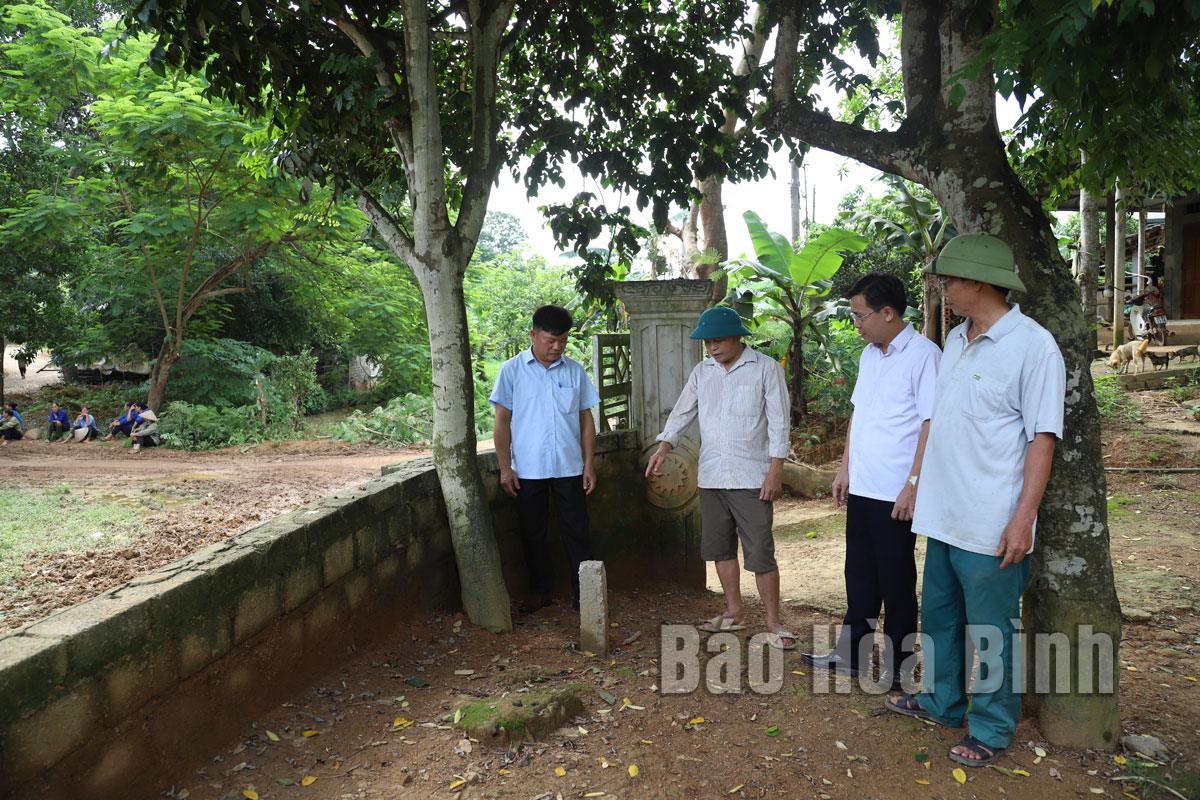
(HBO) - Amidst the encroachment on roads, Ban Trong hamlet, Dinh Cu commune, Lac Son district of Hoa Binh province has deployed boundary marker measures to prevent the problem in the locality.

Ban Trong hamlet, Dinh Cu commune, Lac Son district, places boundary marker to prevent encroachment on traffic roads in the locality
Bui Van Cup, head of Ban Trong hamlet, said that the commune has deployed boundary marker to expand the internal roads in the hamlet to 8 meters wide. The markers have been placed at both ends of the road and at turning points. Local residents all have agreed not to encroach the markers. To date, the locality has completed marking the two-km road through the locality with a total investment of more than 9 million VND (370 USD). The budget was contributed by locals.
The marking of Ban Trong's rural roads shows that with a small model but it can bring about great significance, helping localities to foster the movement of building advanced and model new-style rural areas.
The "household waste incinerator” model in the commune’s Bai Khue hamlet has helped raise awareness of the environmental protection among the households in the locality. Head of Bai Khua hamlet Bui Van Khoac said households in the hamlet live scatteredly and are far away from the district centre, so it is very difficult for centralised collection to treat waste. Because waste collection has not been carried out in the locality, littering has affected landscape and polluted the environment. The "household waste incinerator” model has helped reduce indiscriminate disposal that causes environmental pollution.
Along the road passing through Bai Khua hamlet, each household has built its own small waste incinerator. Garbage is collected to the kiln for treatment, helping reduce littering causing environmental pollution in the neighborhood.
These are just two of the many small models, but they are all considered to be of great significance, easy to make, and bring about practical results. These models have shown creativity, determination to build spacious, green, clean and beautiful areas, improving outlook, infrastructure, and the quality of life for the local residents.
Hoa Binh province is undergoing a dynamic transformation amid Vietnam’s national digital transition. Building on Poliburo’s Resolution No. 57-NQ/TW on breakthroughs in science, technology, innovation, and national digital transformation, the province has rolled out a wide range of practical action plans. A standout initiative is the "Digital Literacy for All” movement, an effort to ensure that no one is left behind in the digital era.
Hoa Binh province is undergoing a dynamic transformation in the wake of the national digital transformation movement. Building on Resolution No. 57-NQ/TW of the Politburo on breakthroughs in science, technology, innovation, and national digital transformation, the province has implemented a wide range of practical action plans. A standout initiative is the "Digital Literacy for All” movement ambitious effort to ensure that no one is left behind in the digital age.
With a spirit of unity and proactive problem-solving, the Party Committee, the government and the people of Dong Lai Commune (Tan Lac District) have made great strides in implementing the resolutions of the 24th Party Congress of the commune for the 2020 - 2025 term. Focusing on leadership and practical actions, the commune has brought the Party’s resolutions into daily life, creating strong impacts and pushing the local development forward.
Amid the nationwide push for digital transformation, young people in Hoa Binh Province are stepping up as dynamic pioneers, applying technology to enhance Youth Union operations and expand the reach of youth-led initiatives. Through creativity and adaptability, Youth Union organizations at all levels have introduced a series of practical solutions, contributing to modern governance and community development.
In recent years, An Nghia commune, located in Lac Son district, has stepped up administrative reform, focusing on improving the quality and efficiency of its single-window service unit for receiving and processing administrative procedures. These improvements have helped create favourable conditions for local residents and organisations to handle administrative procedures, contributing to the commune’s broader socio-economic development.
The Prime Minister-approved master plan to develop the multi-use value of forests ecosystems through 2030, with a vision to 2050, aims to improve the management and sustainable use of forest resources, create jobs, increase incomes, and improve the living standards of ethnic minorities, people in mountainous and remote areas, forest workers and those living near forests.



